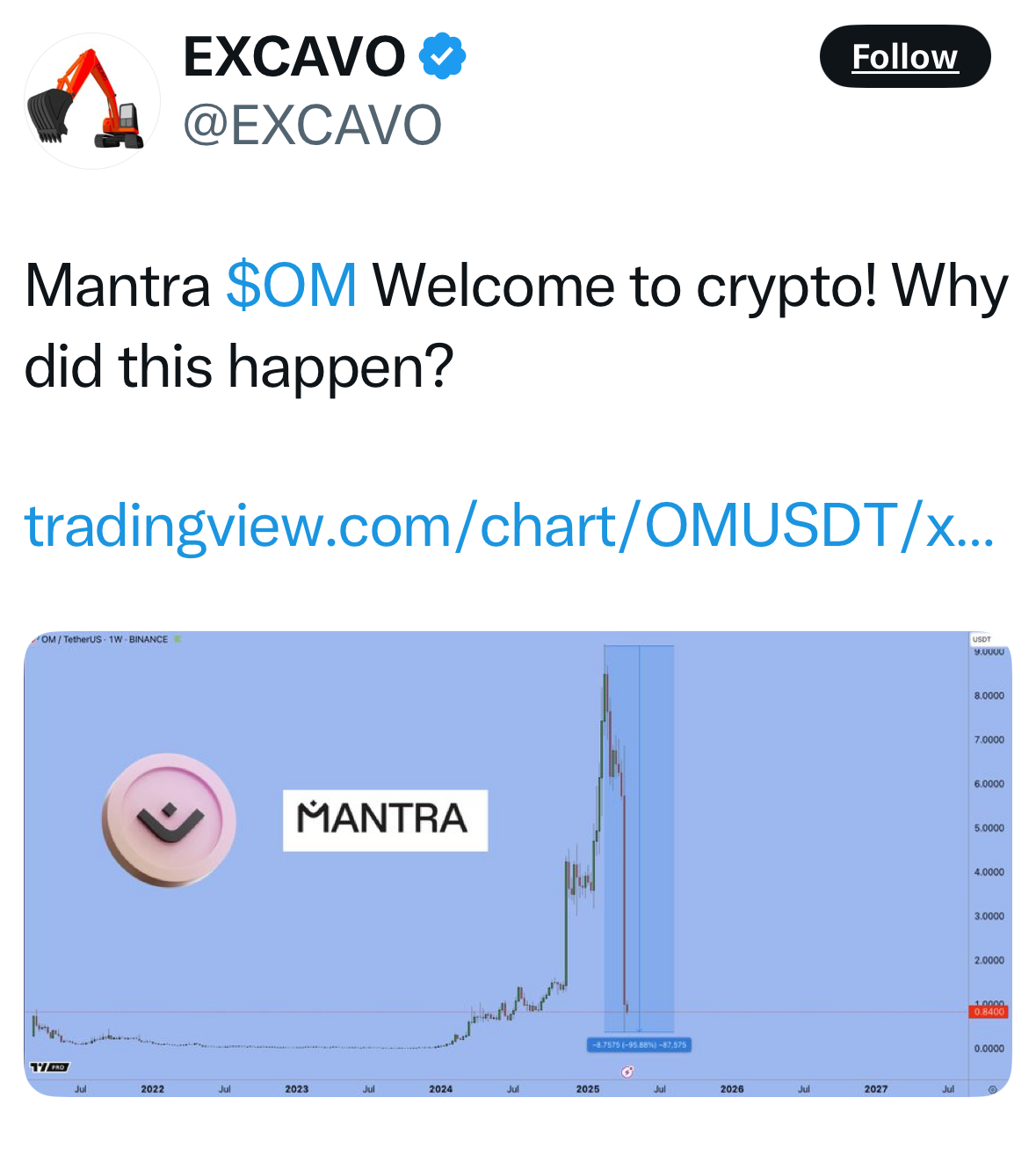| Muyao Shen takes a look at the latest high-profile token crash, and decides that what’s old is always new in crypto. Mantra, a crypto project billed as a blockchain aiming to trade so-called real-world assets, saw the price of its token OM crash by 90% in just hours on April 13, erasing more than $5 billion in market value. While traders are still looking for the catalyst for the sudden collapse that sent the token’s price to 50 cents, many who have spent enough time in the crypto space were not too surprised after taking a closer look at OM’s token design. OM, according to some analyses, belongs to a category known as “low circulation high FDV,” or fully diluted value.
That’s because before the price crash, most of the available OM tokens were sitting in one wallet held by the team behind the project, based on one analysis. John Patrick Mullin, co-founder and CEO of Mantra, disputed this claim. Still, while the OM token currently has a fully diluted value of $1 billion, the total value of crypto sent to the Mantra blockchain was just $3.2 million, according to data site DeFiLlama. (Of course there is some controversy surrounding the math of FDV: It equals the current price times the total number of tokens expected to ever circulate, which makes assumptions that a) those future tokens will be priced where the market is right now and b) that all those tokens will ever be in circulation to begin with.)  Nonetheless, perceptions of such a concentrated ownership can create a fragile market structure that made the token highly vulnerable to selling pressure. Before the crash, investors seemed to have ignored the red flag: OM’s price kept surging for the past year and reached a record high of $9 in February, according to tracker CoinGecko. Mantra’s team did not respond to a request for comment via direct messages on X. “The Mantra crash highlights the dangers of centralized capital-market activity, especially in low-liquidity environments,” said Nicole Zhang, general partner at venture firm Lingfeng Innovation Fund. The drama comes as somewhat of a surprise. After a very unfortunate 2022, crypto traders seemed to be better at doing due diligence and raising red flags to the public, given the rising popularity of X accounts like @0xBalloonLover and @VannaCharmer that are more critical of crypto projects. Still, when prices are going up, investors tend to forget about risks and trade coins like they don’t have a care in the world. Then once the market crashes, people start retweeting posts on X about how “bad” these projects are for crypto. At least until prices go up again. It’s a vicious cycle. Mantra’s drama is nothing new. Similar episodes occurred when FTX’s FTT token was taken as collateral for loans. And it happened again when the lending market in decentralized finance was shaken by an enormous loan backed by a niche token called CRV. It also happened again a few weeks ago when a trader allegedly manipulated an illiquid token on crypto exchange Hyperliquid that led the exchange to make a controversial governance decision. All these incidents are the latest indications that some things never seem to change in crypto. Three years after the collapses of algorithmic stablecoin TerraUSD and the FTX exchange, the crypto industry is still home to risky experiments. Risk management should be a basic requirement for any company handling money, even if it’s magic internet money. And a large part of crypto still doesn’t have any, or at least it seems so. |